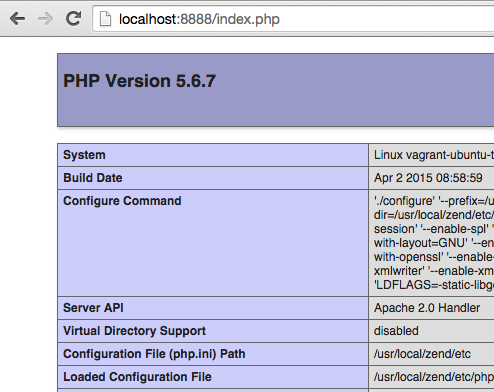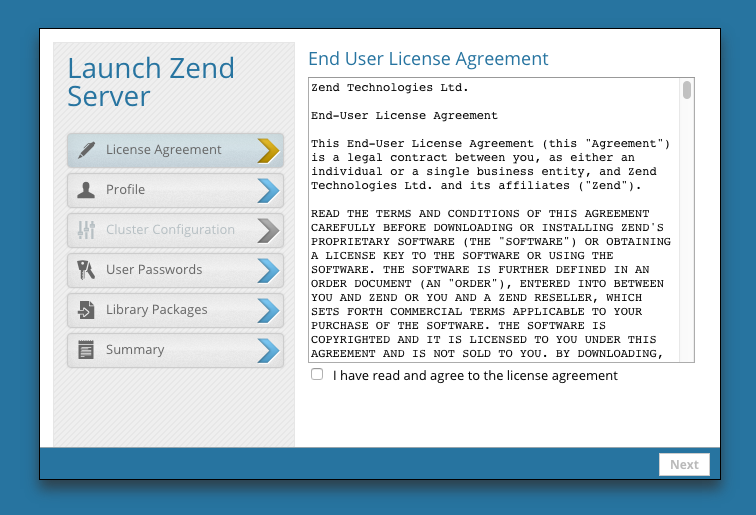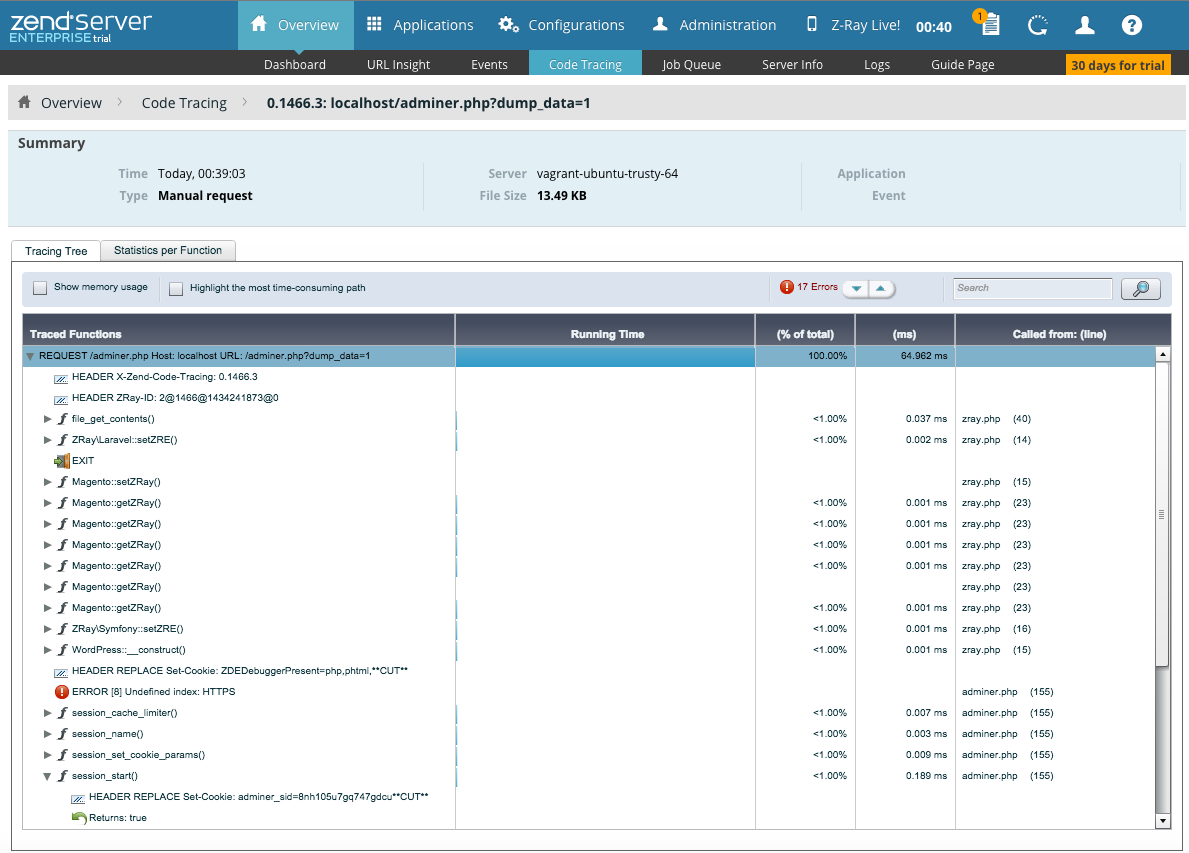Profiling PHP apps using Zend Server
Despite Xdebug is a great tool for debugging PHP apps, profiling applications could be a difficult task to do. One of the best approaches I found, is by using Zend Server Tools.
In this post I show How to setup a simple LAMP environment based on Zend Server and Vagrant:
Vagrantfile:
# -*- mode: ruby -*-
# vi: set ft=ruby :
# Vagrantfile API/syntax version. Don't touch unless you know what you're doing!
VAGRANTFILE_API_VERSION = "2"
Vagrant.configure(VAGRANTFILE_API_VERSION) do |config|
config.vm.box = "ubuntu/trusty64"
# Forward ports to Apache and MySQL
config.vm.network "forwarded_port", guest: 80, host: 8888
config.vm.network "forwarded_port", guest: 3306, host: 8889
config.vm.network "forwarded_port", guest: 10081, host: 10081
config.vm.network "private_network", type: "dhcp"
config.vm.synced_folder "src", "/var/www/src", type:"nfs"
config.vm.provision "shell", path: "provision.sh"
config.vm.provider "virtualbox" do |vb|
# # Don't boot with headless mode
# vb.gui = true
#
# # Use VBoxManage to customize the VM. For example to change memory:
vb.customize ["modifyvm", :id, "--memory", "2048"]
end
endHighligths:
- the port 80 is mapped at 8888
- the source code should be in the src folder (or symlinked)
- the provisioning of the machine is delegated to a shell script: provision.sh
provision.sh:
#!/bin/bash
mysql_config_file="/etc/mysql/my.cnf"
IPADDR=$(/sbin/ifconfig eth0 | awk '/inet / { print $2 }' | sed 's/addr://')
sed -i "s/^${IPADDR}.*//" hosts
echo $IPADDR ubuntu.localhost >> /etc/hosts # Just to quiet down some error messages
echo "deb http://repos.zend.com/zend-server/8.0/deb_apache2.4 server non-free" >> /etc/apt/sources.list
wget http://repos.zend.com/zend.key -O- |apt-key add -
# Update the server
apt-get update
apt-get -y upgrade
# Install basic tools
apt-get -y install build-essential binutils-doc git
apt-get -y install zend-server-php-5.6
# Install MySQL
echo "mysql-server mysql-server/root_password password root" | sudo debconf-set-selections
echo "mysql-server mysql-server/root_password_again password root" | sudo debconf-set-selections
apt-get -y install mysql-client mysql-server
sed -i "s/bind-address\s*=\s*127.0.0.1/bind-address = 0.0.0.0/" ${mysql_config_file}
# Allow root access from any host
echo "GRANT ALL PRIVILEGES ON *.* TO 'root'@'%' IDENTIFIED BY 'root' WITH GRANT OPTION" | mysql -u root --password=root
echo "GRANT PROXY ON ''@'' TO 'root'@'%' WITH GRANT OPTION" | mysql -u root --password=root
# Restart Services
service apache2 restart
service mysql restartThis is all packaged in this zip file:
Highligths:
- MySQL credentials are root / root
Now, after doing “vagrant up” you should be able to see the php info page at localhost:8888/index.php

Finally you can reach the Zend Server Admin panel at localhost:10081

These are some images of the Zend Server in Action:


I hope this guide can help somebody :D
Resources: